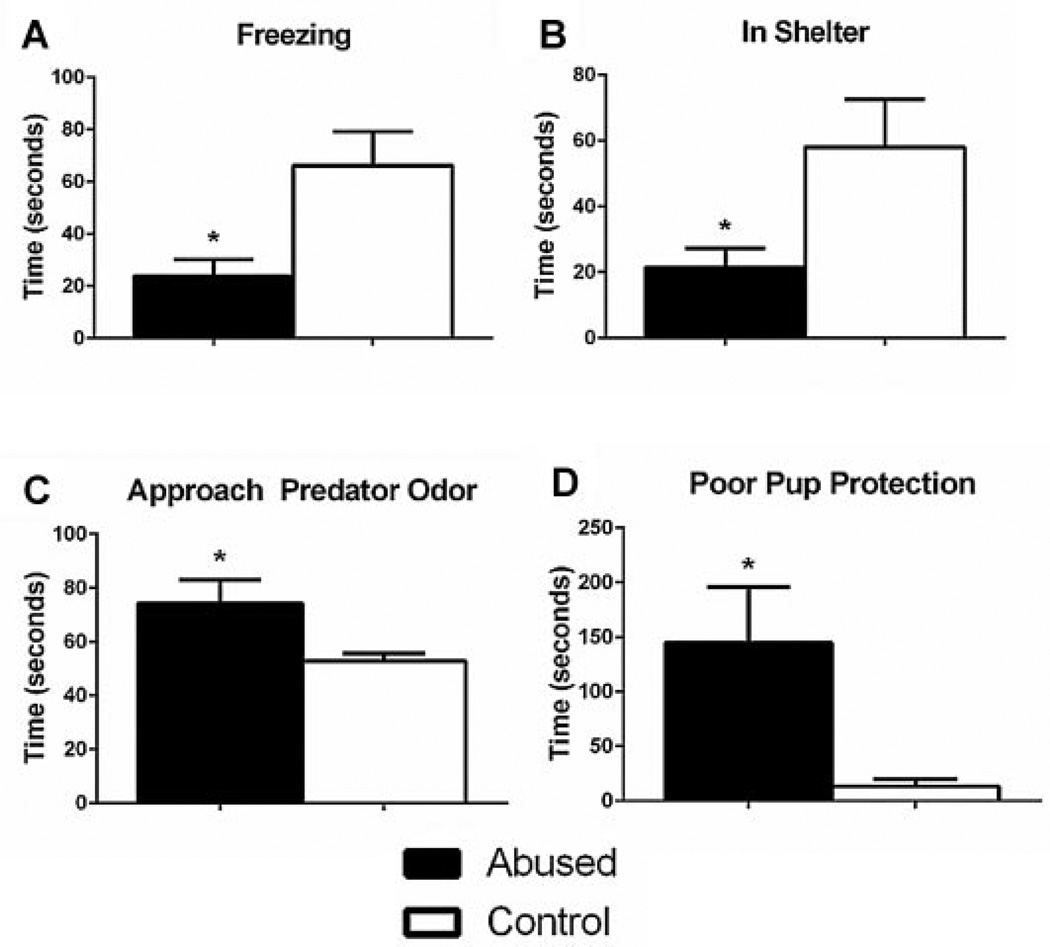FIGURE 3.
All mothers, regardless of rearing condition, display fear to predator odor. However, as illustrated in the TRST, mothers abused in infancy show a heightened threat response and display poor protection of their pups in a threatening situation relative to controls. Mothers that were abused in infancy: (A) exhibit significantly less time freezing [unpaired t-test, t(16) = 2.959, p < .01, n = 9], (B) spend less time hiding in the shelter [unpaired t-test, t(16) = 2.333, p < .05, n = 9], (C) spend significantly more time in the section of the arena that contains predator odor [unpaired t-test, t(16) = 2.342, p < .05, n = 9], and (D) fail to protect their pups in response to predator odor [unpaired t-test, t(16) = 2.546, p <.05, n = 9]. Poor pup protection is determined by total time spent scattering their pups, transporting their pups, and placing their pups close to the predator odor. *Significantly different from all other groups, p < .05. Error bars represent SEM.

